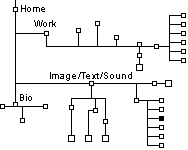|
|
Anna Oppermann: Text im Ensemble und Funktion des Fotos in der Methode
 I. in: Kunstforum International, Vol. 33, 3/79, p. 218 (also published in the catalog: Anna Oppermann Ensembles 1968 bis 1984, Hamburg and Brussels 1984, pp. 64-65) I. in: Kunstforum International, Vol. 33, 3/79, p. 218 (also published in the catalog: Anna Oppermann Ensembles 1968 bis 1984, Hamburg and Brussels 1984, pp. 64-65) *) *)
 II. English translation II. English translation
|
|
